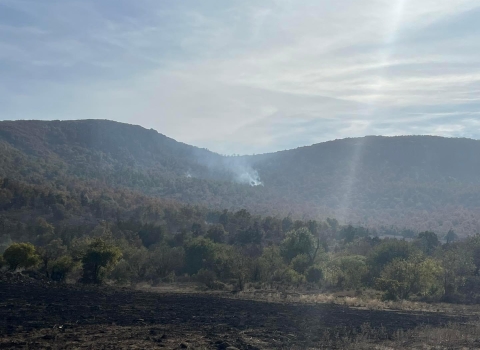Continuing the Biden-Harris Administration’s efforts to increase recreational access on public lands, the U.S. Fish and Wildlife Service today announced new proposed hunting and fishing opportunities for game species at 19 national wildlife refuges on approximately 54,000 acres nationwide.
“This proposed rule highlights the Administration’s commitment to building on and increasing access for hunters and anglers on lands and waters in the National Wildlife Refuge System,” said Service Director Martha Williams. “Responsible hunting and fishing help to promote healthy wildlife habitats while boosting local economies. These additional opportunities will provide all Americans more ways to connect with nature.”
The proposed rule includes 110 distinct opportunities for hunting or sport fishing (an opportunity is one species on one field station).
Increasing access to public lands and waters is a central component of the Biden-Harris Administration’s approach to conservation, including our efforts to conserve 30 percent of U.S lands and waters by 2030 under the America the Beautiful initiative.
This action proposes to bring the number of units in the Service’s National Wildlife Refuge System where the public may hunt to 436 and the number where fishing will be permitted to 378.
The Service is fully committed to continuing to provide important access for hunting and fishing opportunities on National Wildlife Refuges. The best available science, analyzed as part of this proposed rulemaking, indicates that lead ammunition and tackle may have negative impacts on both wildlife and human health. Therefore, while the Service continues to increase access for hunting and fishing opportunities it will also evaluate the future of using lead in those opportunities on Service lands and waters. While this rulemaking provides access to increased opportunities, it does not increase or authorize the use of lead beyond fall 2026 for nine opportunities opened or expanded in this rule.
New refuge opportunities include the proposal to open upland game and big game hunting at San Diego National Wildlife Refuge in California for the first time and to open for the first time Great Thicket National Wildlife Refuge in Maine and New York to migratory game bird, upland game and big game hunting.
Hunting, fishing and other outdoor activities contributed more than $156 billion in economic activity in communities across the United States in 2016, according to the Service’s National Survey of Fishing, Hunting and Wildlife-Associated Recreation, published every five years. More than 101 million Americans — 40 percent of the U.S. population age 16 and older — pursue wildlife-related recreation, including hunting and fishing.
The Service seeks comments from the public on the proposed rule for 60 days, beginning with publication in the Federal Register on June 9, 2022. The notice will be available at http://www.regulations.gov, Docket Number: FWS-HQ-NWRS-2022-0055 and will include details on how to submit your comments.
The Service intends to finalize the proposed changes in time for the upcoming 2022-2023 hunting seasons. A complete list of all refuges in the proposal is available in the proposed rule. View an online list.
The Refuge System is an unparalleled network of 567 national wildlife refuges and 38 wetland management districts. There is a national wildlife refuge national wildlife refuge
A national wildlife refuge is typically a contiguous area of land and water managed by the U.S. Fish and Wildlife Service for the conservation and, where appropriate, restoration of fish, wildlife and plant resources and their habitats for the benefit of present and future generations of Americans.
Learn more about national wildlife refuge within an hour’s drive of most major metropolitan areas – hosting some 65 million visits every year – almost all offering free admittance year-round. National wildlife refuges provide vital habitat for thousands of species and access to world-class recreation, from fishing, hunting and boating to nature watching, photography and environmental education.
Under the National Wildlife Refuge System Improvement Act of 1997, the Service permits hunting and fishing along with four other types of wildlife-dependent recreation, including wildlife photography, environmental education, wildlife observation and interpretation, when they are compatible with an individual refuge’s purpose and mission.
The Service manages hunting and fishing programs to ensure sustainable wildlife populations while also offering other wildlife-dependent recreation on public lands.



